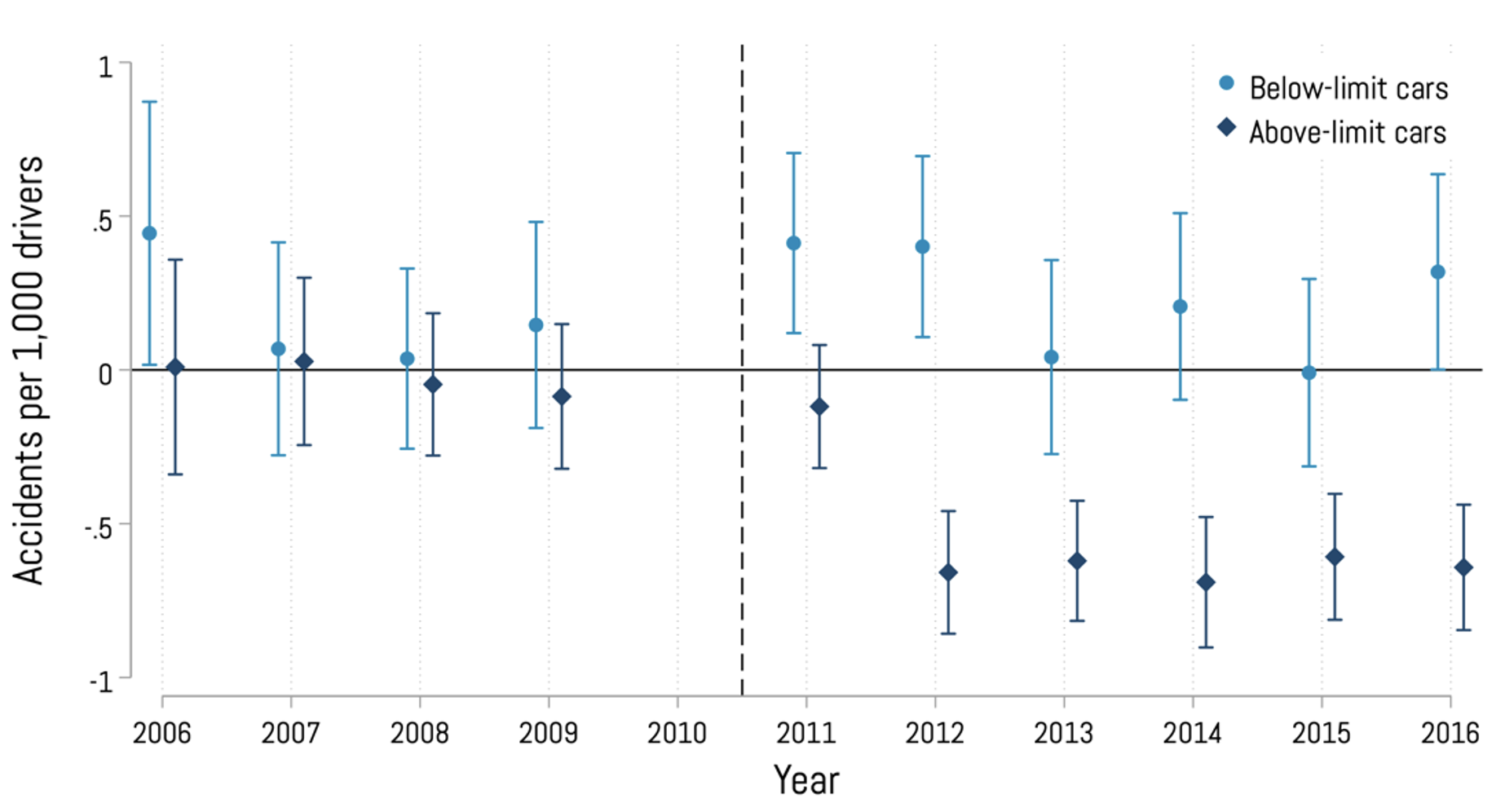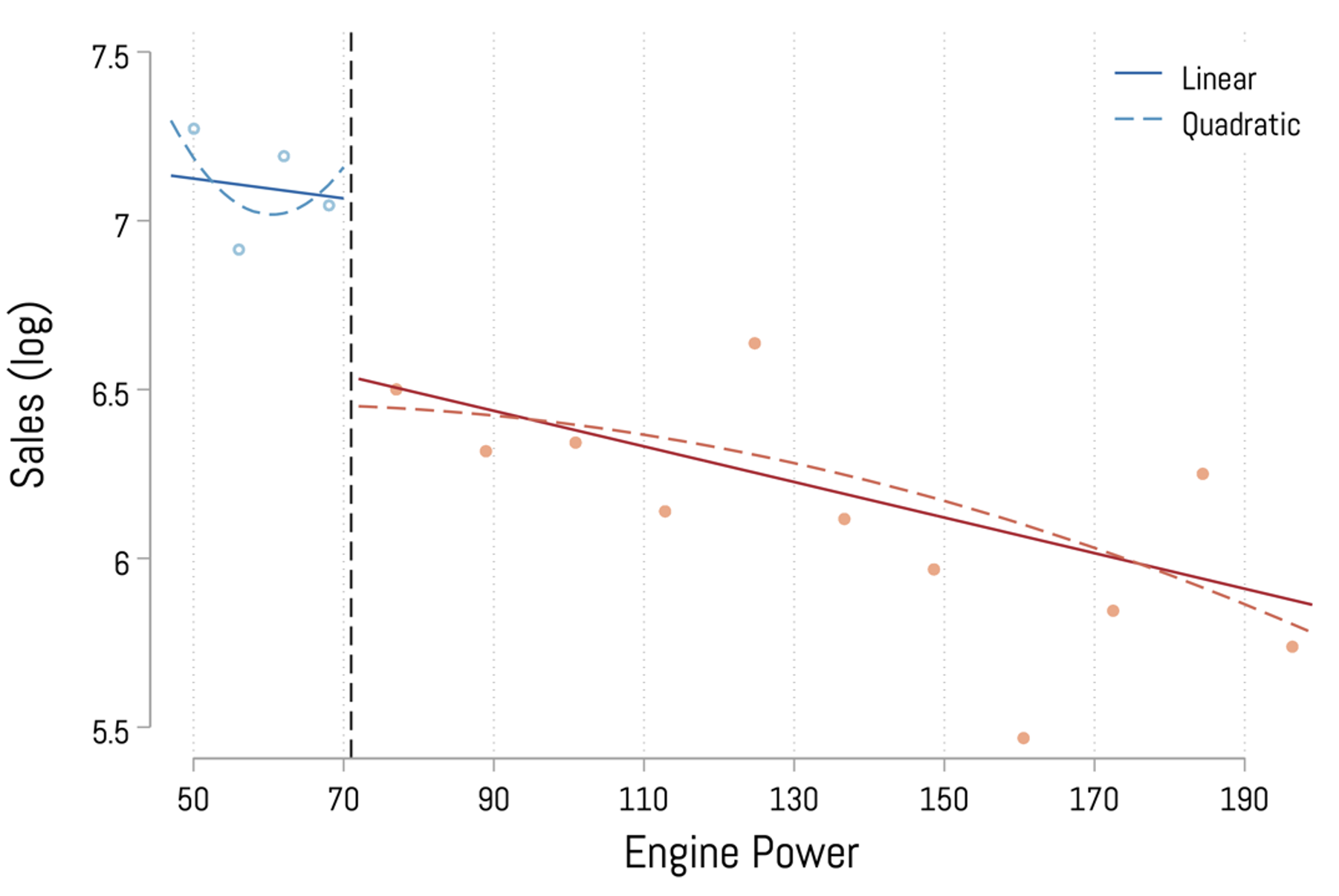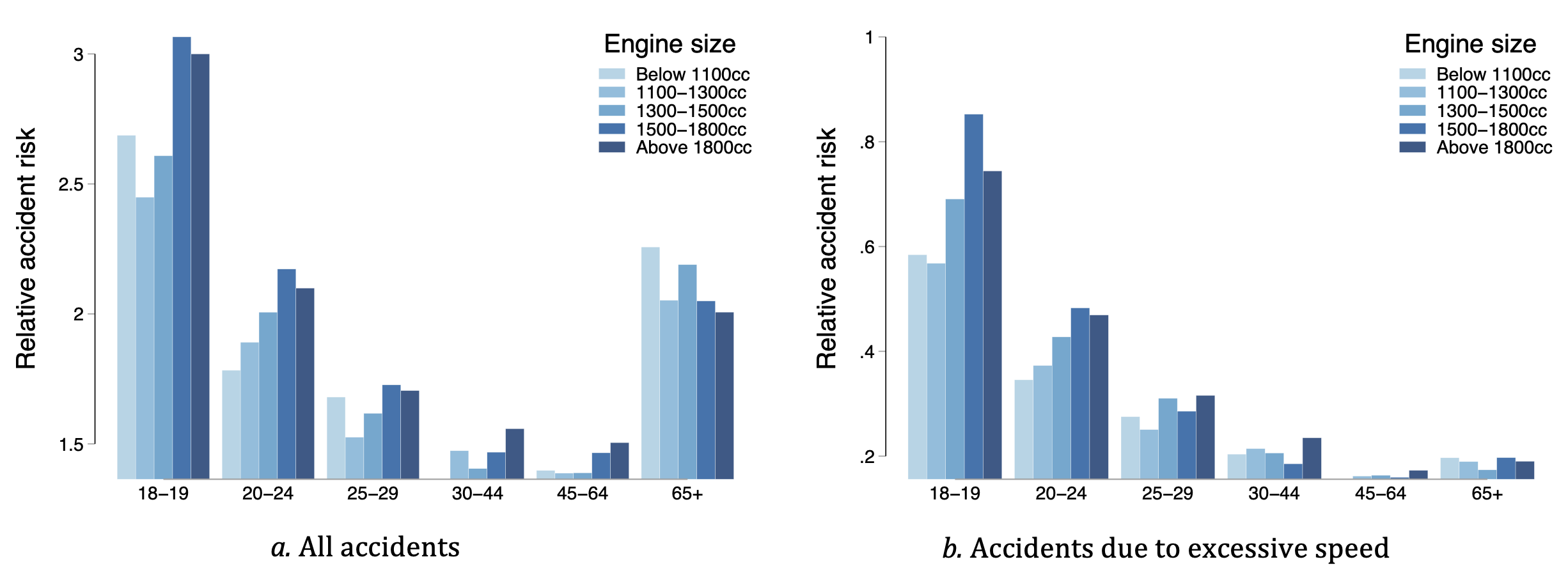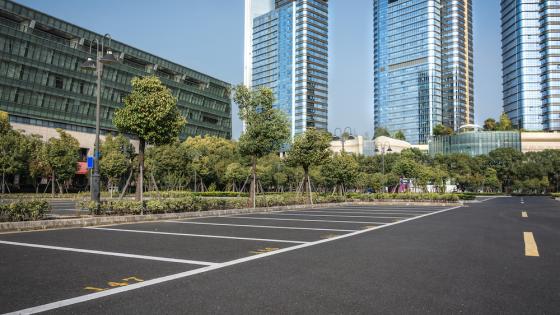Road crashes are the leading cause of death among young people, particularly teens. Lowering the number of teen crashes has long been a top priority on policy agendas worldwide, but achieving this goal is particularly challenging. Teen drivers are the most inexperienced road users, and the most prone to engage in risky driving behaviours like drink-driving and excessive speeding. Moreover, traditional road safety measures – for instance, imposing tighter speed limits, or harsher punishments for using a phone while driving – are questioned for their limited efficacy, especially in the long run. These policies depend on continuous monitoring and sustained enforcement (Abouk and Adams 2013) and often fail to prevent dangerous driving behaviours, but rather sanction them ex post. Additionally, when imposed on the entire population, they result in large social costs, with only modest gains in terms of road safety. Drivers are heterogeneous in terms of risk propensity, especially with respect to age and experience, and strengthening the limits for relatively safe drivers does not help much in preventing road accidents.
Because of this, policies targeted to those generating the largest harm and limiting exposure to specific high-risk settings have gained in popularity. An example are the ‘graduated driver licensing’ (GDL) schemes that guide teens towards full licensure through a system of restrictions that are progressively lifted as they gain experience. Many studies support the efficacy of these programmes in reducing teen crashes, mostly in the context of the US or Australia, where such programmes are commonly implemented. However, nearly all these studies suggest that the main mechanism behind their impact is that they ‘incapacitate’ teens from driving (Dee et al. 2005, Karaca-Mandic and Ridgeway 2010, Gilpin 2019). In other words, GDLs discourages teen from getting a license, which mechanically leads to fewer crashes.
Our study (Balia et al. 2023) examines the effects of the introduction of a similar system in the Italian traffic legislation. The reform, introduced in February 2011, mandates that new licensees are not allowed to drive vehicles with an engine power exceeding 70 kilowatts (around 95 horsepower) during the first 12 months of obtaining a licence.
The road safety effects of the Italian power limit
To study the effects of the reform, we combine administrative data on all traffic accidents that occurred in Italy during the decade 2006-2016 with the census of driving licenses. To isolate the impact of the introduction of the power limit from that of other policies and trends that occurred in the same years, we exploit the fact that different cohorts of prospect drivers are asymmetrically exposed to the reform and that only those with above-limit vehicles should be affected by the new regulation. We find that being subject to the power limit lowers the likelihood of causing a traffic accident by almost 20% (from 4.4 to 3.6 accidents per 1,000 people). Similar to previous studies, we find that part of this reduction can be ascribed to a drop in the number of fresh drivers on the roads, as the number of licenses issued plummets by 19%. However, we also find that those who still get a driving license are 13% less likely to cause a severe road accident. The power limit reduces per-licensee accident rates from 8.3 to 7.2 per 1,000 teen drivers.
As shown in Figure 1, this pattern is specific to accidents caused by vehicles exceeding the maximum consented power, that is, those vehicles that from 2011 can no longer be driven by teens. Also, the reduction in teen crashes is mostly due to fewer excessive speed violations. This is in line with our interpretation of the large effect of the Italian reform: the power limit works as it puts teens in a low-risk environment, where the possibilities for reckless driving are lower.
Figure 1 The effect of the power limit on traffic accidents by complying and non-complying vehicles
Interestingly, we also find that those who underwent the one-year restriction were less likely to cause a car accident even after the restriction was lifted. Why does this happen? We believe that the reason is that the new regulation induced a change in car choice purchases: the reform pushes fresh licensees – and their families – to opt for low-powered cars. We analyse data on Italian car sales from 2006 to 2016 provided by Automobile Club d’Italia (ACI) and find an increase in the sales of below-limit car models, potentially at the expense of models with larger engines. Figure 2 shows that car models with engines that (only just) exceed the engine power threshold of 70kw have much lower sales than those which (only just) comply with the regulation. Hence, the long-lasting impact of the restriction can be explained by drivers remaining under this low-risk environment – a less powerful and thus less risky car – even after the restriction is lifted, as cars are typically chosen on a long-time horizon.
Figure 2 The effect of the power limit on car sales
Policy considerations
Overall, our findings suggest that a viable and effective strategy to enhance road safety is limiting the circumstances where young drivers are more exposed to the risks of speeding or engaging in reckless driving in general. This approach is appealing from a policy perspective for several reasons. First, it eliminates the need for constant and costly police patrolling to directly discourage teenagers from engaging in such risky behaviours. Moreover, unlike more stringent measures such as raising the minimum driving age, it still allows young individuals to drive, although within certain limits.
The challenge lies in accurately identifying the specific circumstances that should be restricted as potential risk factors. The success of the Italian law depends on the fact that driving high-powered vehicles when young (but much less so when older) represents an important accident risk component. Figure 3a clearly illustrates this. Engine size is not a major factor in car crashes for most age groups. However, when focusing on young drivers, there is a positive and steep relationship between engine size and accident risk. For teen drivers, this risk increases by up to 20% when using cars above 1,500cc (roughly those vehicles that are banned by the reform). This pattern becomes even clearer when examining accidents caused by excessive speeding (Figure 3b).
Figure 3 Vehicle engine size and accident risk
Of course, the same reasoning applies to other sources of teen accident risk. For instance, a recent study by Moore and Morris (2023) using Australian data identifies carrying peer passengers overnight as another major factor in teen crashes, showing that prohibiting teen drivers from doing so more than halved these types of accidents in the teen population. Needless to say, the riskiness of different circumstances can evolve over time, along with changes in driving habits, technology, and the market. Therefore, from a policy perspective, there is a need for ongoing legislation maintenance to adapt to the changing environment.
References
Abouk, R and S Adams (2013), “Texting Bans and Fatal Accidents on Roadways: Do They Work? Or Do Drivers Just React to Announcements of Bans?”, American Economic Journal: Applied Economics 5(2): 179–199.
Balia, S, R Brau, and M G Nieddu (2023), “Depowering Risk: Vehicle Power Restriction and Teen Driver Accidents in Italy”, The Journal of Law and Economics, forthcoming
Dee, T S, D C Grabowski, and M A Morrisey (2005), “Graduated driver licensing and teen traffic fatalities”, Journal of Health Economics 24(3): 571–589.
Gilpin, G (2019), “Teen driver licensure provisions, licensing, and vehicular fatalities”, Journal of Health Economics 66: 54–70.
Karaca-Mandic, P and G Ridgeway (2010), “Behavioral impact of graduated driver licensing on teenage driving risk and exposure”, Journal of Health Economics 29(1): 48–61.
Moore, T J and T Morris (2023), “Shaping the Habits of Teen Drivers”, American Economic Journal: Economic Policy, forthcoming.








